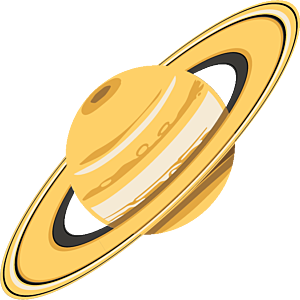The Downlink • Jan 28, 2022
Shoot for the moon that shoots back
Space Snapshot

NASA’s Cassini spacecraft’s time at Saturn yielded some truly jaw-dropping images. This photo shows the moon Enceladus with geysers shooting from its south pole, against the backdrop of Saturn’s rings with the tiny moon Pandora peeking out from behind them. Image credit: NASA/JPL-Caltech/Space Science Institute.
You love space, now take action
This weekly newsletter is your toolkit to learn more about space, share information with your friends and family, and take direct action to support exploration. Anyone can subscribe at planetary.org/connect to receive it as a weekly email.
Mission Briefings


Scientists may have found an elusive medium-size black hole. A new study suggests an object in the Andromeda galaxy (pictured) thought to be a collection of stars is actually a black hole about 100,000 solar masses. “We have very good detections of the biggest, stellar-mass black holes up to 100 times the size of our sun, and supermassive black holes at the centers of galaxies that are millions of times the size of our sun, but there aren't any measurements of black holes between these,” said senior author Anil Seth, associate professor of astronomy at the University of Utah and co-author of the study. “That’s a large gap. This discovery fills that gap.” Image credit: NASA/JPL-Caltech.

JWST has reached its new home in space. On Jan. 24, the telescope arrived in orbit around L2, where the Sun and Earth’s gravity balance out in a way that allows JWST to keep the Sun, Earth, and Moon at its back while it observes the cosmos. It made its journey of 1.5 million kilometers (932,000 miles) more efficiently than expected, leaving it enough fuel to remain at L2 for 20 years — twice as long as originally planned. We’ll still have to wait several months for science images, but for now, we’re happy to see the telescope arrived safe and sound.

NASA’s Curiosity rover collected some interesting Martian samples. A new study found that several of the powdered rock samples contained a kind of carbon associated with life processes on Earth. Scientists on the study said it’s hard to know what this could mean in the search for life, given that Earth and Mars differ enormously.
From The Planetary Society


Enceladus is one of Saturn’s most fascinating moons. Its south polar “tiger stripes” (pictured in infrared) have warmer surface temperatures where subsurface water vents through the icy crust, creating the plumes we see in images like this week’s Space Snapshot. New research suggests that this water may be coming from shallow pockets of water, not the ocean deep below the icy crust. The scientists who conducted this research join this week’s Planetary Radio to talk about their findings and what it all could mean for the search for life beyond Earth. Image credit: NASA et al.

What goes up must come down, and Enceladus makes no exception. As you read above, Saturn’s rings collect some of the water that shoots up through cracks in the icy moon’s crust, but some of it also falls back to the surface as snow. Some water even makes it off-moon, falling as snow on the neighboring moons Mimas and Tethys. Enceladus isn’t the only place you’ll find extraterrestrial snow. The latest article from Planetary Society editor Rae Paoletta takes a wintery tour through the snowy worlds of the solar system.

Believe it or not, Venus is one of these snowy worlds. But as you might expect, the solar system’s hottest planet doesn’t have the kind of snow we’re used to. This is just one of the many surprises Venus has up its sleeve. Japan’s Akatsuki spacecraft is the only probe currently orbiting Venus, but more missions are in development.
What's Up

Jupiter shines low to the west in the evening sky. In the predawn, look for super-bright Venus, with Mars nearby in the eastern sky. Learn more at planetary.org/night-sky.
If you value The Downlink, we have a request...

We believe everyone should have easy access to the wonders of the cosmos. That's why we publish our content for free — to inspire curious minds and empower explorers of all walks of life. Become a member of The Planetary Society today for as little as $4/month to help make this work possible.
Wow of the Week

Saturn’s spectacular rings are made of rock, ice and dust. When you look at the rings through the right filter, you can see the different components. This image from NASA’s Cassini spacecraft looks at a section of the rings in ultraviolet light. Particles with more rock and dust in them show up redder, with “cleaner” particles of ice taking on a bluish hue.
Share your artwork with us!
We love to feature space artwork in the Downlink. If you create any kind of space-related art, we invite you to send it to us by replying to any Downlink email or writing to [email protected]. Please let us know in your email if you’re a Planetary Society member!


 Explore Worlds
Explore Worlds Find Life
Find Life Defend Earth
Defend Earth


